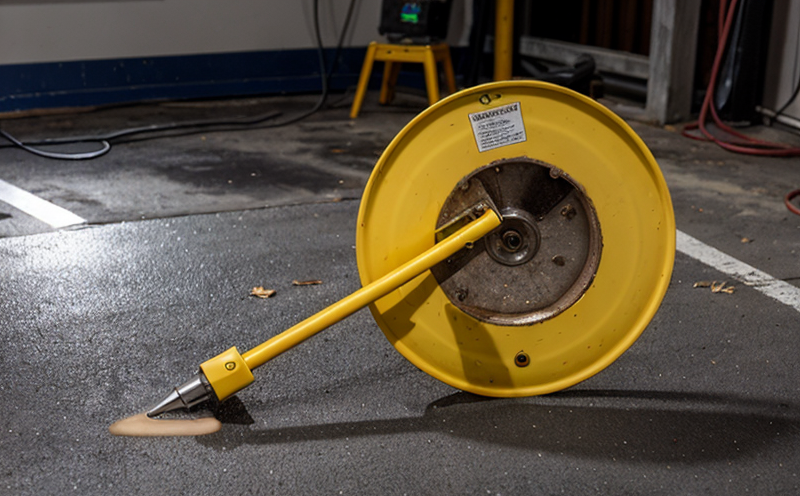ASTM E125 Magnetic Particle Testing of Steel Castings
The ASTM E125 standard outlines a method for detecting surface and near-surface discontinuities in ferromagnetic materials, including steel castings. This technique is crucial for quality assurance because it helps identify flaws that may compromise the integrity and performance of critical components used in various industries.
During magnetic particle testing (MPT), an external magnetic field is applied to the component being inspected. When there are defects or discontinuities present, these areas become magnetically saturated and attract ferromagnetic particles, which form visible indications on the surface that can be observed by inspectors. This method is particularly effective for detecting cracks, inclusions, porosity, and other surface imperfections.
The process begins with thorough specimen preparation, where the casting must be clean, free from oil, grease, or any other contaminants that could interfere with the magnetic field. Once prepared, a magnetic field is generated using either direct current (DC) or alternating current (AC), depending on the specific requirements of ASTM E125.
The testing process involves applying a magnetic suspension consisting of ferromagnetic particles suspended in a carrier fluid. This allows the particles to be drawn into any flaws present, making them visible under close inspection. The application and evaluation phases are critical for accurate results; improper technique can lead to false positives or missed defects.
The use of ASTM E125 ensures consistency across different laboratories, providing confidence in the reliability of the test results. This standard is widely adopted in industries where high-quality components are essential, such as aerospace, automotive, and manufacturing sectors. Compliance with this standard helps ensure that products meet strict quality standards and can be trusted to perform reliably under operational conditions.
Proper training for personnel conducting these tests is also critical. Inspectors must understand the nuances of ASTM E125 to ensure accurate testing outcomes. This includes understanding how different materials respond to magnetic fields, recognizing various types of discontinuities, and interpreting the results effectively.
Why It Matters
Magnetic particle testing is essential for ensuring product integrity in industries where failures due to internal defects can lead to catastrophic consequences. By using ASTM E125, manufacturers can identify and address potential issues early in the production process, preventing costly rework or recalls.
For quality managers and compliance officers, adhering to this standard provides a clear path for meeting regulatory requirements and ensuring product reliability. In R&D environments, MPT helps refine designs by identifying weak points before full-scale manufacturing begins. For procurement teams, it ensures that the materials they source are of the highest quality.
The importance of ASTM E125 extends beyond just detecting flaws; it also contributes to continuous improvement in manufacturing processes. By regularly testing components and analyzing results, manufacturers can identify trends and make necessary adjustments, leading to more robust products.
Benefits
The benefits of ASTM E125 magnetic particle testing are numerous and significant for various stakeholders:
- Enhanced Quality Control: Ensures that only defect-free components enter the supply chain.
- Cost Savings: Early detection of flaws reduces the need for costly repairs or replacements later in the production process.
- Risk Reduction: By identifying and addressing defects, the risk of product failure is significantly lowered.
- Increased Customer Trust: Compliance with industry standards builds confidence among customers about the quality of products they receive.
Industry Applications
| Industry Sector | Specific Applications |
|---|---|
| Aerospace | Inspecting critical components like turbine blades and landing gears. |
| Automotive | Testing engine blocks, transmission casings, and other structural parts. |
| Manufacturing | Evaluating large castings used in industrial machinery. |
| Military | Checking high-stress components like weapon systems and armor plates. |





